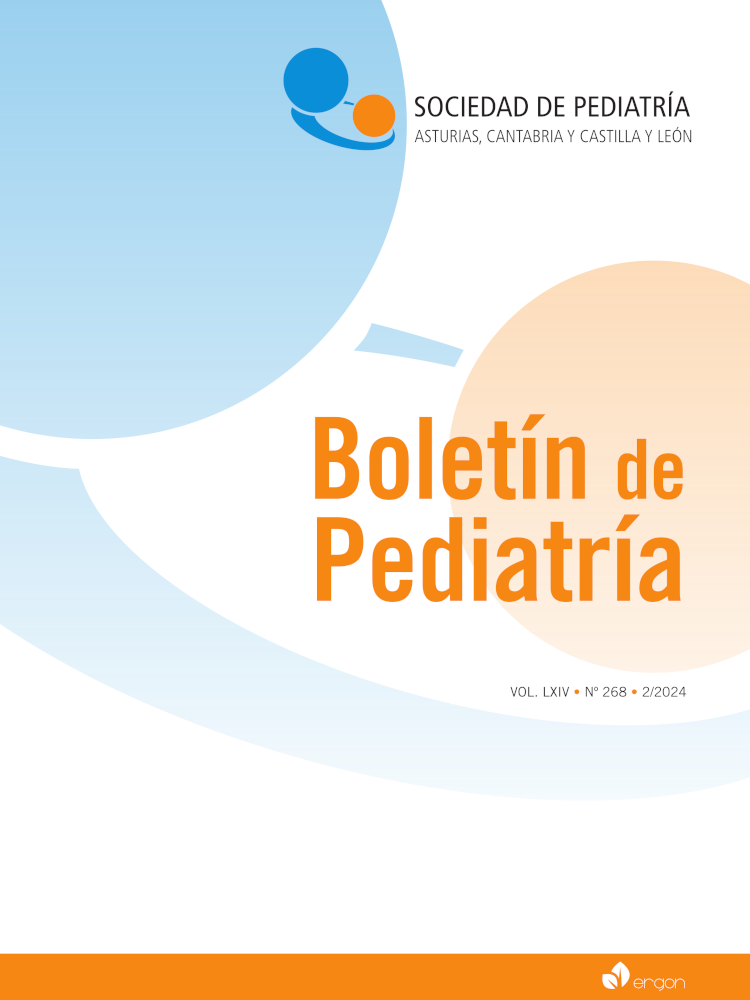Abstract
Background and aim. Today we live in a world surrounded by technology. Many children do not comply with the recommendations of paediatric guidelines on the use of electronic devices and the age at which they start acquiring their first smartphone is very early. This study describes the opinions and perceptions of a group of healthcare professionals on the use of smartphones during pre-adolescence.
Methods. A qualitative study was conducted through semi-structured interviews with six health professionals (four paediatricians, one psychologist and one psychiatrist) specialized in child health in a first-level hospital (Spain). All interviews were transcribed literally (in May 2023), anonymized and strategically analyzed using a deductive-inductive approach.
Results. The professionals interviewed stated that society is digitalized and that especially mobile phones can have both beneficial and harmful effects on children’s health. The professionals declared that more and more children are entering the consultation room with a mobile device and that the age of the first device should be around 12 years old, although it depends on the maturity of the child. According to gender, the professionals explain that the use of social networks is higher in girls and video games in boys. There is unanimity among professionals in the creation of a web platform to help families manage their first mobile phone during pre-adolescence.
Conclusions. The pattern and time of screen device use continue to be shaped by the advancement of technology. Families, educators, and policymakers must partner to establish healthy guidelines for promoting the use of display devices together.
References
Park JH, Park M. Smartphone use patterns and problematic smartphone use among preschool children. PLoS One. 2021; 16(3): e0244276. https://doi.org/10.1371/journal.pone.0244276
Byrne R, Terranova CO, Trost SG. Measurement of screen time among young children aged 0-6 years: A systematic review. Obes Rev. 2021; 22(8): e13260 https://doi.org/10.1111/obr.13260
Crompton H, Burke D, Gregory KH. The use of mobile learning in PK-12 education: A systematic review. Comput Educ. 2017; 110: 51-63. https://doi.org/10.1016/j.compedu.2017.03.013
Bentley GF, Turner KM, Jago R. Mothers' views of their pres-chool child's screen-viewing behaviour: a qualitative study. BMC Public Health. 2016; 16: 718. https://doi.org/10.1186/s12889-016-3440-z
Chiang JT, Chang FC, Lee KW, Hsu SY. Transitions in smartphone addiction proneness among children: The effect of gender and use patterns. PloS One. 2019; 14(5): e0217235. https://doi.org/10.1371/journal.pone.0217235
Caldeiro Pedreira MC, Castro Zubizarreta A, Havránková T. Móviles y pantallas en edades tempranas: convivencia digital, derechos de la infancia y responsabilidad adulta. Res Educ Learn Innov Arch 2021; (26): 1-17. https://doi.org/10.7203/realia.26.15936
Muppalla SK, Vuppalapati S, Reddy Pulliahgaru A, Sreenivasulu H. Effects of excessive screen time on child development: An updated review and strategies for management. Cureus. 2023; 15(6): e40608. https://doi.org/10.7759/cureus.40608
Howie EK, Joosten J, Harris CJ, Straker LM. Associations bet-ween meeting sleep, physical activity or screen time behaviour guidelines and academic performance in Australian school children. BMC Public Health. 2020; 20(1): 520. https://doi.org/10.1186/s12889-020-08620-w
Arias-de la Torre J, Puigdomenech E, García X, Valderas JM, Eiroa-Orosa FJ, Fernández-Villa T, et al. Relationship between depression and the use of mobile technologies and social media among adolescents: umbrella review. J Med Internet Res. 2020; 22(8): e16388. https://doi.org/10.2196/16388
Sanders T, Noetel M, Parker P, Del Pozo Cruz B, Biddle S, Ronto R, et al. An umbrella review of the benefits and risks associated with youths' interactions with electronic screens. Nat Hum Behav. 2024; 8(1): 82-99. https://doi.org/10.1038/s41562-023-01712-8
Valkenburg PM, Meier A, Beyens I. Social media use and its impact on adolescent mental health: An umbrella review of the evidence. Curr Opin Psychol. 2022; 44: 58-68. https://doi.org/10.1016/j.copsyc.2021.08.017
Armstrong K. Netherlands: Phone ban announced to stop school disruptions. BBC News. 2023. Disponible en: https://www.bbc.com/news/world-europe-66107027
The Premier, Deputy Premier, Minister for Education and Early Learning. NSW Government begins mobile phone ban in public high schools. NSW Government; 2023. Disponible en: https://www.nsw.gov.au/media-releases/nsw-government-begins-mobile-phone-ban-public-high-schools
Pyper E, Harrington D, Manson H. The impact of different types of parental support behaviours on child physical activity, healthy eating, and screen time: A cross-sectional study. BMC Public Health. 2016; 16(1): 568. https://doi.org/10.1186/s12889-016-3245-0
El Gobierno aprueba el Anteproyecto de Ley Orgánica para la protección de las personas menores de edad en los entornos digitales [Internet]. [citado en 2024]. Disponible en: https://www.mpr.gob.es/prencom/notas/Paginas/2024/04062024-proteccion-menores-entorno-digital.aspx
Tong A, Sainsbury P CJ. Consolidated criteria for reporting qua-litative research (COREQ): a 32-item checklist for interviews and focus groups. Int J Qual Health Care. 2007; 19: 349-57. https://doi.org/10.1093/intqhc/mzm042
Malterud K, Siersma VD, Guassora AD. Sample size in qualitati-ve interview studies: Guided by information power. Qual Health Res. 2016; 26(13): 1753-60. https://doi.org/10.1177/1049732315617444
Wosny M, Strasser LM, Hastings J. Experience of health care professionals using digital tools in the hospital: Qualitative sys-tematic review. JMIR Hum Factors. 2023; 10(1): e50357. https://doi.org/10.2196/50357
Lindín C. Hacia una verdadera digitalización en educación secundaria: la filología digital. Universitat de Barcelona; 2020. Disponible en: https://diposit.ub.edu/dspace/bitstream/2445/162437/1/ired_19_Hacia_una_verdadera_digitalizacion.pdf
Martínez-Cardona JA, Alanis-Álvarez R. Incremento de las horas-pantalla en la población pediátrica durante la pandemia por SARS-CoV-2. Aten Primaria. 2021; 53(7): 102071. https://doi.org/10.1016/j.aprim.2021.102071
O'Keeffe GS, Clarke-Pearson K, Mulligan DA, Altmann TR, Brown A, Christakis DA, et al. The impact of social media on children, adolescents, and families. Pediatrics. 2011; 127(4): 800-4. https://doi.org/10.1542/peds.2011-0054
Feijoo-Fernández B, Sádaba-Chalezquer C, Bugueño-Ipinza S. Anuncios entre vídeos, juegos y fotos. Impacto publicitario que recibe el menor a través del teléfono móvil. Prof Inf. 2020; 29(6): 1-14. https://doi.org/10.3145/epi.2020.nov.30
Twenge JM, Martin GN. Gender differences in associations bet-ween digital media use and psychological well-being: Evidence from three large datasets. J Adolesc. 2020; 79: 91-102. https://doi.org/10.1016/j.adolescence.2019.12.018
Pons M, Bordoy A, Alemany E, Huget O, Zagaglia A, Slyvka S, et al. Hábitos familiares relacionados con el uso excesivo de pantallas recreativas (televisión y videojuegos) en la infancia. Rev Esp Salud Pública. 2021; 95(1): e202101002.
Moreno-Villares JM, Galiano-Segovia MJ. El tiempo frente a las pantallas: la nueva variable en la salud infantil y juvenil. Nutr Hosp. 2019; 36(6): 1235-6.

This work is licensed under a Creative Commons Attribution-NonCommercial 4.0 International License.
Copyright (c) 2024 Boletín de Pediatría
